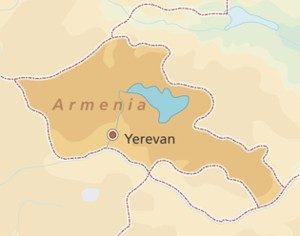 Under pressure from a surging popular protest movement, Armenia’s Prime Minister Serzh Sargsyan (left) resigned on Monday, less than one week after taking office, notes the Commission on Security and Cooperation in Europe, also known as the U.S. Helsinki Commission:
Under pressure from a surging popular protest movement, Armenia’s Prime Minister Serzh Sargsyan (left) resigned on Monday, less than one week after taking office, notes the Commission on Security and Cooperation in Europe, also known as the U.S. Helsinki Commission:
The mass demonstrations were sparked by Armenia’s transition this month to a parliamentary system from a semi-presidential one. Small-scale protests emerged in mid-April as it became clear that parliament would elect Sargsyan, who served as president since 2008, to the newly empowered post of prime minister, and culminated with tens of thousands of demonstrators in Armenia’s central square. Protestors met news of Sargsyan’s resignation with jubilation, but after securing its principal demand, the loosely organized, youth-led movement faces uncertain prospects going forward.
 What will be the outcome of early dialogue between the government and protest leaders? Can the movement achieve more lasting reform of the entrenched power structures in Armenia’s political system? Will this collective mobilization translate into sustained political engagement? What are the regional implications of this domestic upheaval?
What will be the outcome of early dialogue between the government and protest leaders? Can the movement achieve more lasting reform of the entrenched power structures in Armenia’s political system? Will this collective mobilization translate into sustained political engagement? What are the regional implications of this domestic upheaval?
The following expert panelists will address these questions and others:
- Elen Aghekyan, Independent Research Analyst
- Stephen Nix, Eurasia Regional Director, International Republican Institute [a core institute of the National Endowment for Democracy].
Other panelists may be added.
REVOLUTION IN ARMENIA? THE POWER AND PROSPECTS OF THE PROTEST MOVEMENT
Thursday, April 26, 2018
4:00 p.m.
Capitol Visitor Center
Room SVC 200
Live Webcast: www.facebook.com/HelsinkiCommission







